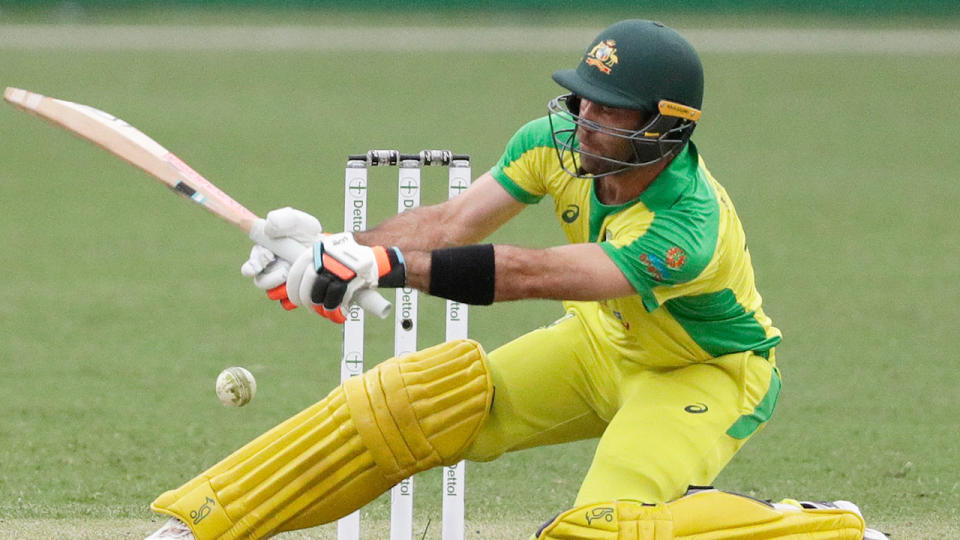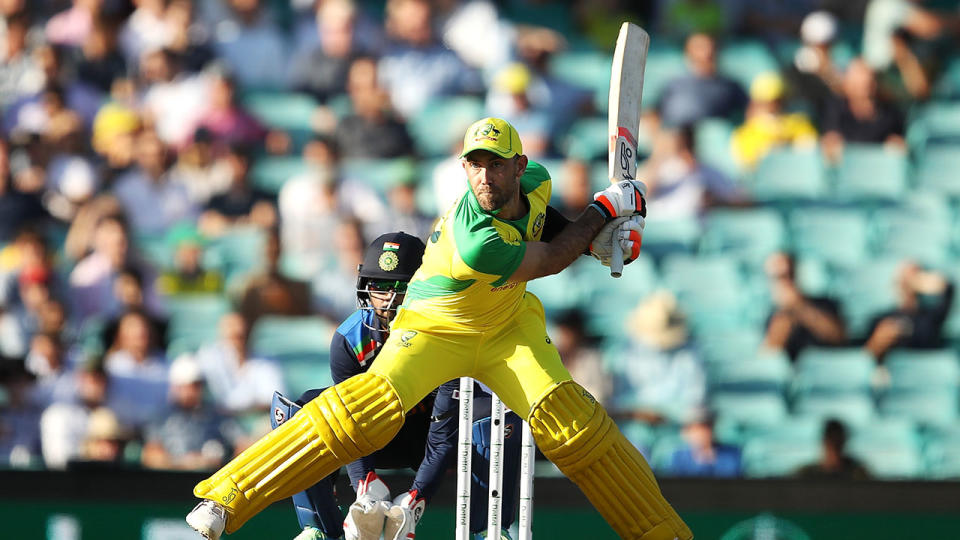'Blatantly unfair': Former captain's fury over contentious Aussie tactic

Cricket law-makers need to crack down on batsman switch-hitting during games because it's unfair on bowlers, according to former Australia captain Ian Chappell.
The batting technique - perhaps best perfected by Australia's Glenn Maxwell - has been employed superbly during Australia's two massive wins in the one-day series against India.
'NO EXCUSE': Fans fed up with 'disgraceful' cricket farce
BRUTAL: Warne's sledge amid David Warner injury drama
Maxwell has frequently lined up in his natural right-handed batting stance, only to switch to left-handed at the last minute to exploit the gaps on the other side of the field.
The Aussie batsman has used the technique superbly in the opening two run-fests against India, where bowlers have been punished in the batting-friendly conditions at the SCG.
Chappell concedes that while switch-hitting is "amazingly skilful", it's not fair on the bowling side who are trying to set their field according to the opposition player's batting stance.
“How can one side of the game, ie. the bowlers, they have to tell the umpire how they’re going to bowl. And yet the batsman, he lines up as a right-hander – I’m the fielding captain, I place the field for the right-hander – and before the ball’s been delivered, the batsman becomes a left-hander,” Chappell told nine.com.au.
“One of the main reasons why he’s becoming a left-hander is so he can take advantage of those field placings. I’d love the administrators who made those laws, I’d love them to explain to me how that’s fair.”
Many would argue that if a batsman is skilful enough to be able to switch-hit as effectively as someone like Maxwell, then they should be able to take advantage of it.
Chappell wants greater fairness for fielding side
However, Chappell argues that if the batsman are allowed to do it, then bowlers should also be able to employ similar tactics of deception.
“I just can’t believe the players don’t arc-up about it. If I’m captain, I’m going to take the ball myself and I’m going to tell the umpire I’m bowling right-arm over [the wicket], and then I’m going to run in and bowl around,” he said.
“Obviously the umpire‘s going to complain and I’m going to say, ’Well, you stop him (the batsman) doing something I think is totally unfair and I’ll stop doing something unfair’. If the administrators aren’t smart enough to change it, then my attitude always was, ‘Well, I’ll take the law into my own hands’.”

While Chappell is happy for switch-hitting to remain part of the game, he insists it should only be allowed if the bowling side knows in advance what stance the batsman is taking.
“It’s very simple … All you’ve got to say is that if the batsman changes the order of his hands or his feet [as the bowler runs in], then it’s an illegal shot,” Chappell said.
“(But) if the batsman’s right-handed and wants to play switch-hit [in advance of the bowler running in], any bowler worth his salt will say, ‘Go for your life, mate, I’ll take my chances’. But when he completely becomes the opposite-handed batsman to what he faces up as, then it’s not fair.
“If he’s good enough to do it by excellent footwork or whatever other means he can devise, I don’t have a problem with it. But when it’s blatantly unfair, it annoys the hell out of me.”
Click here to sign up to our newsletter for all the latest and breaking stories from Australia and around the world.
